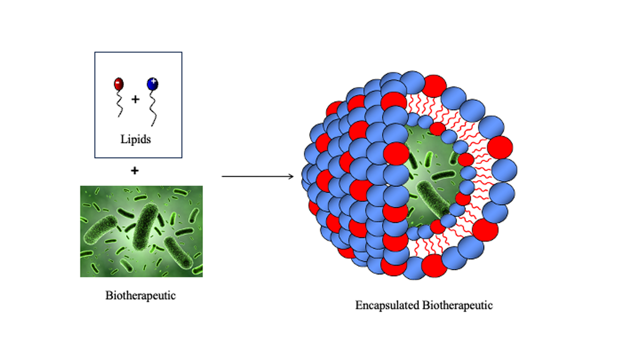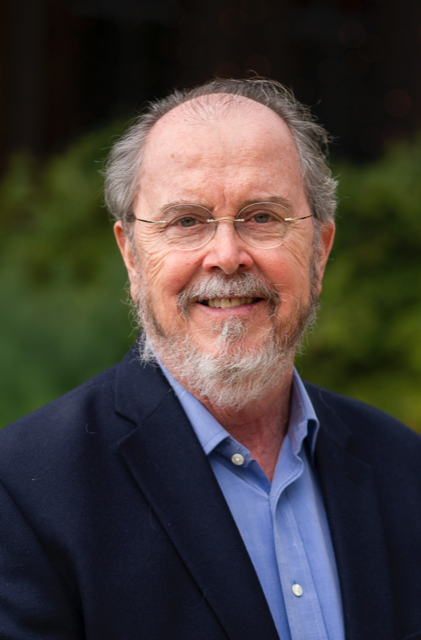We Have You Surrounded!
Encapsulation and Its Application to Vaccine Formulation and Drug Delivery
Philip DeShong
Emeritus Professor of Chemistry & Biochemistry
University of Maryland
Sponsored by PSW Science Members Larry Millstein & Robin Taylor
About the Lecture

The use of medicinal compounds for the treatment of ailments in humans and animals predates recorded history, and many of these ancient remedies are popular even today. However, the administration of medicinal compounds is complicated by a host of physical and biological processes that limit their effectiveness.
The modern therapeutic armamentarium has two general categories of chemotherapeutics: small molecule drugs, such as aspirin and oxycontin, and biotherapeutics, such as erythropoietin (Epogen) and etanercept (Enbrel). Small molecule drugs typically contain fewer than 50 atoms, while biotherapeutics are derived from naturally occurring biomolecules such as proteins and DNA that contain many thousands of atoms. Examples of each of these different classes of chemotherapeutics will be presented and differences in the formulation strategies for the two categories will be presented.
Encapsulation techniques for the formulation of each category of chemotherapeutic have been developed to meet the different challenges they pose. This lecture will discuss small molecule formulation briefly; but, will mainly focus on the challenges posed by biotherapeutics. The scope and limitations of two encapsulation strategies will be featured: the Pfizer-BioNtek-Moderna mRNA-based Covid vaccine and an antibody-drug conjugate. Although both of these products have been highly successful in both the clinic and financially, neither is ideal, and a next generation of encapsulation technology will be required to extend the application of these biotherapeutics, particularly in the developing world. The lecture will conclude with a discussion of some next generation solutions currently being pursued.
Selected Reading & Media References
https://www.nature.com/articles/s41578-021-00358-0
About the Speaker

Philip DeShong is Professor Emeritus of Chemistry & Biochemistry at the University of Maryland. He is also a Consultant on Integrity and Compliance at UMd, and he is a member of the ACS Committee on Ethics. Previously, he served as Chief Compliance Officer in the Division of Research at UMD, and held adjunct positions at Greenbaum Cancer Center, the Center for Nanomedicine, and the Fischell Department of Bioengineering at UMd. In addition, Philip is Chief Technology Officer of Precision Nano Assemblies and previously founded and served as President of SD Nanosciences.
Philip’s research interests center on the development of new synthetic methods, the total synthesis of biologically active substances, and the application of functionalized nanomaterials for use as diagnostic and drug delivery agents.
He is an author on more than 120 peer-reviewed publications, and he has mentored over 100 research students and postdoctoral fellows.
Philip earned a BS in Chemistry at UT-Austin and a DSc in Chemistry at MIT. He also did postdoctoral work at MIT and ETH Zurich.
CV: https://orcid.org/0000-0003-1787-2158
Webpage: https://chem.umd.edu/people/philip-deshong
Minutes
On April 5th, 2024, in the Powell Auditorium of the Cosmos Club in Washington, D.C., President Larry Millstein called the 2,493rd meeting of the Society to order at 8:05 p.m. ET. He began by welcoming attendees, thanking sponsors for their support and announcing new members. Scott Mathews then read the minutes of the previous meeting which included the lecture by Thomas Karr and James Trebes, titled “Emerging Directed Energy Weapons”. The minutes were approved as read.
President Millstein then introduced the speaker for the evening, Philip DeShong, of the University of Maryland. His lecture was titled “We Have You Surrounded: Encapsulation and Its Application to Vaccine Formulation and Drug Delivery”.
The speaker began by presenting a brief history of vaccine development: starting with the first vaccination for Small Pox by Jenner in 1796, the first Rabies vaccination by Pasteur in 1815, the Salk-Sabin Polio vaccines in 1955, and the Mumps-Measles-Rubella vaccines which appeared in the 1960’s and 70’s. DeShong indicated that prior to 1980, vaccines were produced using dead or attenuated micro-organisms. Since 1980, most vaccines are “sub-unit” vaccines, wherein a gene for a specific antigen from the virus or bacterium was transferred to some other organism, using molecular biology, to produce large quantities of the antigen which could be isolated and purified to form the vaccine. He described the mechanism by which these vaccines impart immunity by saying that the Innate Immune Response chews up the foreign micro-organisms and presents the fragments to the Adaptive Immune Response, which creates highly specific antibodies to the antigen.
DeShong then discussed mRNA vaccines, and the various advantages of the mRNA technique. He explained that the mRNA, which is essentially the “factory” for the antigen, is readily grown using molecular biology techniques, does not require antigens to be grown in cells, does not require isolation or purification, and does not require that proteins be formulated into a vaccine, which could alter the structure of the protein. He then discussed the problems with this approach: mRNA is rapidly degraded in the body. mRNA must get inside a cell before it can produce proteins. There is no mechanism for the uptake of mRNA into cells. DeShong said “It’s a great idea…except it doesn’t work.”
He then stated that in combination with codon optimization, mRNA could be encapsulated in such a way that it was both protected from degradation and exhibit dramatically enhanced cellular uptake. He indicated that both BioNtek and Moderna used this encapsulation technique in the COVID-19 vaccines. DeShong indicated that the remainder of the talk would be about colloidal chemistry and the use of liposomes as encapsulants.
He explained the chemistry of liposome formation: free lipids rapidly forming a micelle, and micelles slowly converting into liposomes, or lipid nanoparticles, with a spherical lipid shell and a void inside. He discussed the optimization of liposomes for the delivery of mRNA, including the type of lipids, the stability of the liposomes, the size of the lipid “bubbles”, and micro-fluidic devices for producing uniform sizes.
He stated that there are currently more than 200 clinical trials being conducted using mRNA vaccines encapsulated in liposomes, and that encapsulated mRNA represents a paradigm shift in vaccine technology. He predicts that mRNA vaccines will replace all or most sub-unit vaccines in the near future.
DeShong then described more advanced liposomes made from common soaps, which are called surfactant vesicles. He indicated that these liposomes had many desirable properties, including: spontaneous formation in physiological saline, narrow size distribution (160 nm +/- 30 nm), stability of more than 5 years, ability to withstand higher temperatures, lower cost, and functionalizable surfaces.
The speaker described how surfactant vesicles could be used to create an artificial cell or artificial virus, by decorating the vesicles outer surface with various biological molecules. He showed pictures of a surfactant vesicles decorated with spike protein to mimic a COVID-19 virus. DeShong claimed to have produced artificial pathogens for several gram-negative bacteria, viruses, and a bio-warfare agent.
DeShong ended his lecture by stating that he believes future work in vaccine development and drug delivery research will include liposomal encapsulation, surfactant encapsulation, and other advanced encapsulation techniques.
The lecture was followed by a Question and Answer session.
A guest asked why the artificial pathogen, which closely resembles the actual pathogen, does not infect the patient with the disease. DeShong responded by saying that the artificial pathogen does not contain the DNA and mRNA of the pathogen, and therefore cannot reproduce and cause infection.
A member asked whether DeShong had used modelling and AI as a tool for optimizing the liposomes. DeShong responded that modelling is regularly used to predict and optimized the formation of the liposomes or vesicles, and that students in his lab were currently attempting to use AI to develop new encapsulants.
A member asked which diseases would be treated with mRNA vaccines in the near future. DeShong indicated that viruses would be first, likely followed by bacteria, and eventually cancers.
A guest asked about the toxicity of the surfactant vesicles. DeShong indicated that the toxicity is similar to liposomes.
Several questions were asked with respect to the COVID-19 virus and the mRNA vaccines for COVID-19. While DeShong tried to answer these questions in a general way, he indicated that he was not an expert on COVID-19 and that he did not feel comfortable giving definitive answers to several of these questions.
After the question and answer period, President Millstein thanked the speaker and presented him with a PSW rosette, a signed copy of the announcement of his talk, and a signed copy of Volume 1 of the PSW Bulletin. He then announced speakers of up-coming lectures, made a number of housekeeping announcements, and invited guests to join the Society. He adjourned the 2493rd meeting of the society at 9:53 pm ET.
Temperature in Washington, DC: 7.2° Celsius
Weather: Partly cloudy
Audience in the Powell auditorium: 46
Viewers on live stream: 17 …for a total of 63 live viewers
Views of the video in the first two weeks: 176
Respectfully submitted, Scott Mathews: Recording Secretary